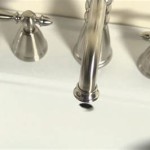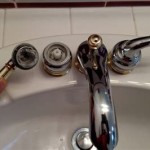How to Run Water Lines for a Basement Bathroom
Adding a bathroom to your basement can significantly enhance your home's functionality and value. However, one of the most crucial steps in this project is running the water lines. This process involves bringing water from the main supply to your new fixture locations, often requiring careful planning and precise execution. This article will guide you through the essential steps for running water lines to your basement bathroom, providing you with the knowledge and understanding for a successful project.
Planning and Preparation
Before you begin, it's vital to have a well-defined plan. Determine the locations of your fixtures, such as the toilet, sink, and shower, and mark them on the floor. You'll also need to consider the water supply source. In most cases, you'll be tapping into the existing main water line, but you may need to install a new line if your current system lacks sufficient capacity.
Next, gather the necessary tools and materials:
- Pipe cutters
- Pipe wrenches
- Teflon tape
- PVC cement or soldering materials (depending on pipe type)
- PEX crimp rings
- PEX expansion tool (if using PEX pipe)
- Angle stop valves
- Shutoff valve
- Water pressure gauge
- Copper or PEX pipe
- Fittings (elbows, tees, and unions)
- Safety glasses
- Gloves
Once you have your materials, it's essential to locate your main water supply line. This is typically found in the basement, near your water heater or a point where the water enters your home. Once you've located your main line, you'll need to shut off the water supply to the entire house to prevent leaks during installation.
Routing and Installation
There are two primary methods of running water lines: copper pipe and PEX pipe. Copper is a durable, long-lasting material, while PEX is more flexible and easier to install. The choice depends on your preference and budget. Regardless of the material, you'll need to plan the route for your pipes. Consider the following:
- Ensure that the pipes are accessible for future maintenance or repairs.
- Minimize the number of bends and curves in the pipe to reduce water pressure loss.
- Avoid running pipes directly through walls or structural elements.
- Install a shutoff valve at the point where your main water line branches off to your basement bathroom. This will allow you to isolate the bathroom's water supply in case of leaks or repairs.
After planning your route, you can start installing your pipes. The installation process will vary based on the chosen pipe material:
- Copper pipe: Cut the copper pipe to the required lengths using a pipe cutter. Use pipe wrenches to thread the pipe into the fittings. Apply Teflon tape to the male threads to create a watertight seal. Solder the pipe joints using a soldering iron and flux. Always ensure you have adequate ventilation when working with soldering materials.
- PEX pipe: PEX pipe is a flexible plastic tubing that is relatively easy to install. Cut the PEX pipe to the required length using a utility knife. Use a PEX expansion tool to expand the ends of the pipe, allowing it to slip over the fittings. Install crimp rings at the ends of the PEX pipe and securely crimp them using a specialized tool. Before proceeding, ensure you fully understand the specific instructions for your chosen PEX brand and system.
Testing and Finishing
Once your water lines are installed, it's essential to test for leaks. Turn the water supply back on to your main water line, and carefully inspect all joints and connections. If you find any leaks, shut off the water and tighten the connections or re-solder/re-crimp as needed. If the leak persists, you may need to consult with a plumber for assistance.
Once you've verified that your lines are leak-free, you can finish the installation by attaching your fixtures. This will involve connecting the supply lines to the individual fixtures, using appropriate fittings and valves. Ensure you use the correct size and type of supply lines for each fixture. You'll also need to install drain lines for your fixtures, which will lead to your basement bathroom drain. This step involves connecting the drain lines to the drain trap for each fixture and ensuring that the lines are properly sloped to allow for gravity-based drainage.
Running water lines to your basement bathroom is a complex process. It's essential to carefully plan your route, choose the right materials, and follow the proper installation procedures. While you can attempt this project yourself, it's essential to be aware of the potential hazards involved. If you're unsure about any aspect of the installation process, consult with a licensed plumber for assistance.

How To Finish A Basement Bathroom Pex Plumbing

How To Finish A Basement Bathroom Pex Plumbing

How To Finish A Basement Bathroom Pex Plumbing
How To Plumb A Basement Bathroom Diy Family Handyman

How To Finish A Basement Bathroom Pex Plumbing

Basement Bathroom Plumbing Planning For A Below Grade Lavatory

How To Diy Bathroom In Basement Without Breaking Concrete

How To Finish A Basement Bathroom Pex Plumbing

Plumbing Basement Bathroom Water Lines With Pex

How To Diy Bathroom In Basement Without Breaking Concrete
Related Posts







